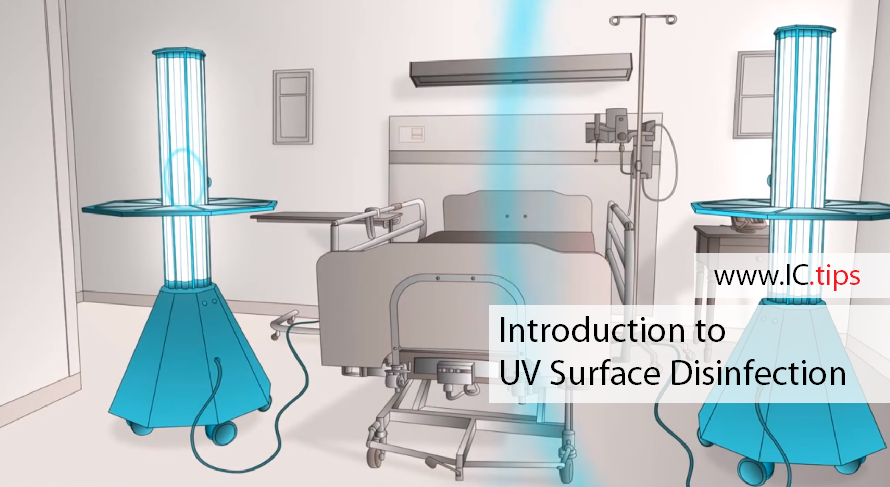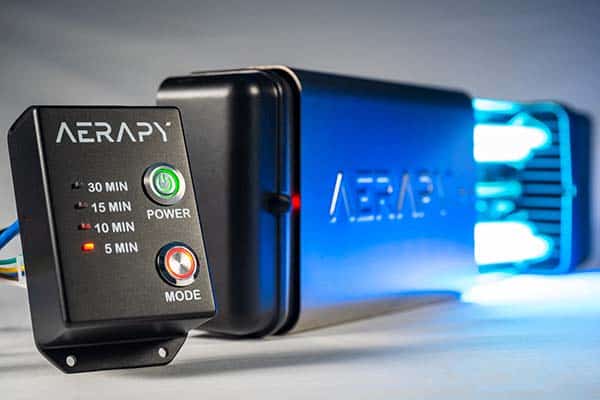UV Surface Disinfection Techniques: Optimizing Performance for Germ-Free Spaces
UV Surface Disinfection Techniques: Optimizing Performance for Germ-Free Spaces
Blog Article
Unveiling the Conveniences of UV Sanitation: Guaranteeing Sanitized and clean Rooms
While conventional cleaning methods have actually long been relied upon, innovations in innovation have actually presented a cutting-edge option that guarantees clean and sterilized areas: UV disinfection. In addition, we will delve into the security considerations that have to be taken into account when applying UV sanitation. Prepare to reveal a brand-new dimension of cleanliness and uncover the untapped potential of UV sanitation.

The Scientific Research Behind UV Disinfection
UV sanitation is a medically tested approach that utilizes ultraviolet light to remove harmful microbes from surfaces and water. The science behind UV sanitation hinges on the capability of UV-C light to harm the DNA and RNA of microorganisms, making them unable to reproduce and creating their eventual death. UV-C light drops within the wavelength variety of 200 to 280 nanometers, which is very efficient in ruining germs, viruses, and other pathogens.
When subjected to UV-C light, the hereditary product of microbes soaks up the power from the light, bring about the formation of thymine dimers. These dimers interrupt the typical duplication and transcription procedures of the microorganisms, inhibiting their ability to make it through and recreate (uv surface disinfection). The DNA and RNA damages brought on by UV-C light is dangerous to the microbes, making UV sanitation a efficient and trusted method for eliminating a wide array of virus
UV sanitation is especially advantageous in atmospheres where conventional chemical disinfectants might be inefficient or unwise. It is a non-chemical technique that does not leave any deposits or dangerous spin-offs, making it safe for usage in food handling, health care facilities, water therapy plants, and different other markets. Furthermore, UV sanitation is eco friendly, as it does not add to the growth of antibiotic-resistant germs or other unsafe contaminants.
Efficiency of UV Sanitation on Microorganisms
The effectiveness of UV disinfection in eliminating microorganisms has been thoroughly examined and confirmed in various clinical research studies. UV radiation has the capacity to inactivate a large range of microorganisms, consisting of fungi, germs, and infections, by harming their DNA or RNA. This stops them from duplicating and creating infections.
One research study released in the American Journal of Infection Control found that UV disinfection was effective in lowering the existence of numerous drug-resistant bacteria in hospital rooms. An additional study carried out by the National Institute for Occupational Security and Wellness showed that UV disinfection was able to get rid of 99.9% of the flu infection on surfaces.
UV disinfection has likewise shown pledge in combating the spread of healthcare-associated infections (HAIs) According to a research published in The Lancet, using UV-C light along with basic cleaning protocols substantially lowered the occurrence of HAIs in a hospital setting.
Additionally, UV disinfection has shown to be efficient versus arising microorganisms, such as the extreme intense breathing syndrome coronavirus 2 (SARS-CoV-2), which triggers COVID-19. A research study carried out by the National Arising Contagious Illness Laboratories showed that UV-C light can inactivate the infection on surface areas within secs.
Applications of UV Sanitation in Various Settings
With its tried and tested effectiveness in eliminating virus, UV sanitation has actually discovered applications in a range of setups. Among one of the most typical areas where UV disinfection is utilized remains in medical care facilities. UV technology is used to decontaminate individual spaces, operating rooms, and other high-touch surfaces, reducing the threat of healthcare-associated infections. In enhancement, UV disinfection is also being applied in food processing plants and dining establishments to make certain the security of food and prevent the spread of foodborne ailments. UV sanitation is additionally helpful in water treatment plants, where it is made use of to eliminate damaging microorganisms and provide safe drinking water.
An additional essential application of UV sanitation impends purification sector. UV air purifiers are utilized in residential, industrial, and industrial setups to internet get rid of air-borne bacteria, viruses, and mold and mildew spores. This technology is particularly useful in atmospheres where individuals are more prone to respiratory infections, such as healthcare facilities, schools, and office complex.
Additionally, UV sanitation is increasingly being used in public transport systems, such official website as trains and buses, to keep clean and sterilized areas for guests. UV light is used to disinfect surfaces and air inside the lorries, minimizing the threat of spreading out infectious diseases.
Advantages of UV Disinfection Over Standard Methods
In comparison to conventional techniques, UV sanitation offers an array of distinct advantages that make it a better choice in various markets and settings. One considerable advantage is its efficiency versus a vast array of microorganisms, including fungis, infections, and germs. Unlike chemical anti-bacterials that may have limited effectiveness against specific pathogens, UV sanitation is a non-selective process that can kill or inactivate a broad spectrum of hazardous organisms.
Another advantage of UV sanitation is its capability to supply fast and effective disinfection. Standard sanitation techniques typically need longer contact times or multiple actions to accomplish the preferred degree of disinfection. On the other hand, UV light can provide continual and instant disinfection, decreasing downtime and enhancing performance in numerous applications.
UV disinfection also uses a eco pleasant and safe choice to standard disinfection methods. uv surface disinfection. Unlike chemical representatives, UV light does not leave behind any kind of unsafe deposits or by-products, making it ideal for use in sensitive environments such as food handling facilities, medical care settings, and water therapy plants
Additionally, UV sanitation is a cost-effective option in the long run. While the ahead of time investment for UV sanitation systems may be greater than typical techniques, the functional costs are commonly lower. UV lights have a lengthy life expectancy and call for minimal upkeep, resulting in minimized labor and replacement expenses.
Safety Factors To Consider for UV Disinfection
Taking into consideration the potential threats related to UV sanitation, it is necessary to attend to the safety factors to consider entailed in implementing this modern technology. UV sanitation utilizes ultraviolet light to kill or inactivate microbes, making it an effective technique for disinfecting numerous surfaces and items. It is vital to recognize that UV radiation can also position dangers to human health and wellness if appropriate security actions are not complied with.
First and primary, direct exposure to UV radiation can create harm to the skin and check that eyes. Prolonged exposure can cause sunburn, skin damages, and also a boosted threat of creating skin cancer cells. Consequently, it is essential to guarantee that UV disinfection systems are correctly enclosed and geared up with safety features such as automatic shut-off systems or motion sensors to stop unintentional exposure.

Additionally, proper training and education and learning are important for those in charge of operating UV sanitation systems. They should understand the potential hazards, comprehend the safety procedures, and recognize how to take care of and maintain the devices correctly.
Verdict
UV sanitation can be used in various settings, including healthcare facilities, food processing plants, and water treatment systems. Compared to standard techniques, UV sanitation has benefits such as faster disinfection times, very little chemical use, and no harmful results.
UV sanitation is a medically tried and tested approach that makes use of ultraviolet light to remove harmful microorganisms from surface areas and water. The DNA and RNA damages created by UV-C light is dangerous to the bacteria, making UV sanitation a efficient and trustworthy technique for killing a broad range of pathogens.
An additional benefit of UV sanitation is its capability to give effective and rapid disinfection. UV sanitation uses ultraviolet light to kill or inactivate bacteria, making it an efficient method for disinfecting numerous surfaces and objects. Contrasted to standard methods, UV sanitation has advantages such as faster sanitation times, very little chemical usage, and no harmful byproducts.
Report this page